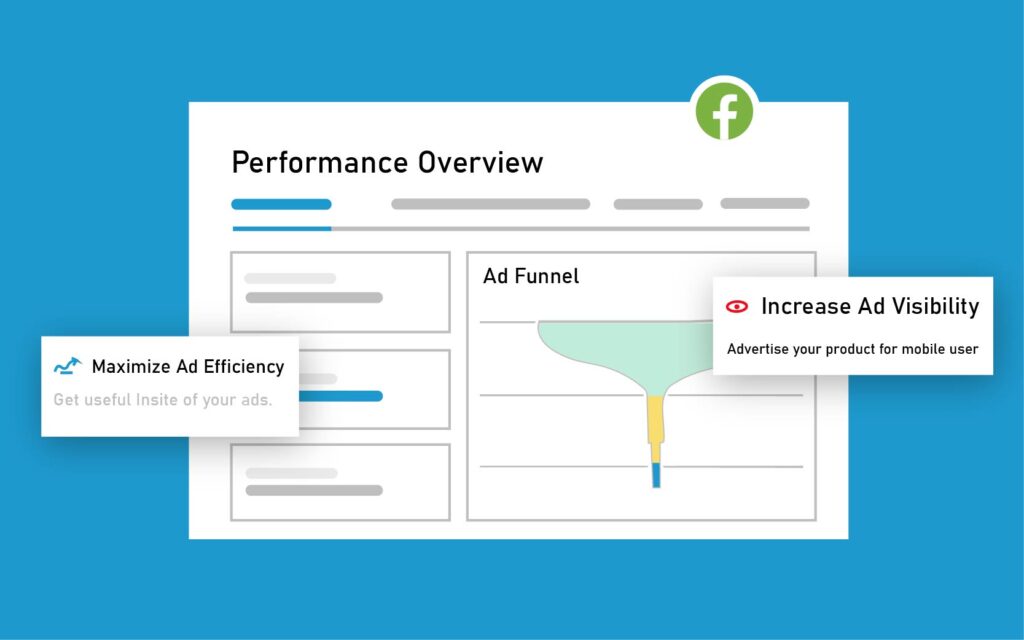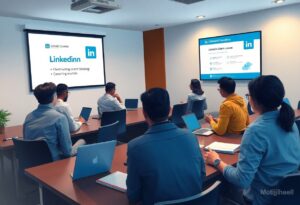
LinkedIn Client Hunting Course in Mohakhali
LinkedIn is more than just a platform for networking; it’s a powerful tool for finding

If you want my team to manage your good marketing for you, click here
Just imagine transforming your LinkedIn profile into a powerful tool for client acquisition. In this blog post, I will guide you through the vitals of the LinkedIn Client Hunting Course in Gulshan, where I share effective strategies for attracting potential clients and enhancing your professional network. You’ll learn how to optimize your profile, engage with your audience, and leverage LinkedIn’s unique features to maximize your outreach. Join me in unlocking the full potential of your LinkedIn presence and taking your client hunting skills to the next level!
While many professionals use LinkedIn as a digital resume, it is so much more when it comes to business. I believe that LinkedIn can be a powerful tool for building your brand, networking with industry leaders, and expanding your client base. By leveraging the platform effectively, you can connect with potential clients, showcase your expertise, and stay informed about industry trends that impact your business.
On my journey, I’ve discovered that LinkedIn is significant in client acquisition. The platform allows you to target decision-makers and connect with people who align with your business goals. By building an authoritative presence, you can attract leads organically, leading to more significant opportunities and partnerships.
Understanding LinkedIn’s features is imperative for maximizing your networking potential. By familiarizing yourself with tools such as LinkedIn Groups, InMail, and advanced search options, you can streamline your outreach efforts and deliver personalized messages that resonate with potential clients.
A key feature to take advantage of is LinkedIn Groups. These communities allow you to engage with like-minded individuals in your industry. You can share insights, ask questions, and create connections that may transform into meaningful business relationships. Additionally, utilizing advanced search capabilities enables you to pinpoint decision-makers based on specific criteria, amplifying your outreach effectiveness. These tools, when used strategically, can significantly enhance your client acquisition process.

You may not realize it, but your LinkedIn profile acts as your digital business card. An effective profile showcases your professional identity, attracting potential clients and creating opportunities. By strategically refining your profile elements, you can significantly increase your visibility and credibility in your industry. I recommend focusing on your key experiences, achievements, and the value you can bring to prospective clients. This can set you apart from the competition in the bustling LinkedIn arena.
Beside your profile picture, your headline is one of the first things people notice on your LinkedIn profile. A well-crafted headline should not only identify your current position but also highlight what you offer and your unique selling proposition. In the summary section, I suggest weaving a narrative that showcases your journey, skills, and accomplishments, while also addressing the pain points of your target audience. This engaging introduction will encourage potential clients to explore your profile further.
Below your experience, highlighting your skills and acquiring endorsements can greatly enhance your profile’s credibility. I advocate for selecting relevant skills that align with your target audience’s needs. Additionally, reaching out to colleagues and clients to endorse these skills can create a solid social proof, building trust in your expertise.
Also, actively engaging with your LinkedIn network to gain endorsements for your skills can be a game-changer. I often remind my clients that the more endorsements you collect, the more your profile will stand out. Aside from asking for endorsements, I like to give them in return, fostering a sense of community and reciprocity on the platform. It shows not only your expertise but also your willingness to support others, reinforcing your professional identity and broadening your network.
Even in the digital age, effective networking remains a powerful tool for client acquisition. By leveraging platforms like LinkedIn, I can establish meaningful connections that extend beyond mere introductions. Focusing on creating genuine relationships rather than just transactional interactions can yield long-term benefits, opening doors to opportunities that might not have been possible otherwise.
Above all, my first step is to identify potential clients whose needs align with my expertise. I make it a priority to personalize connection requests and engage with their content, helping to build rapport before initiating direct conversations. This approach not only shows that I value their work but also establishes a foundation for further discussions.
The next step in my networking strategy is to actively join and participate in relevant LinkedIn groups. By engaging in discussions and sharing insights, I can establish myself as a thought leader and connect with members who might benefit from my services.
Plus, being part of these groups allows me to tap into a community of like-minded professionals. I focus on contributing valuable content and answering questions, fostering relationships with potential clients and collaborators. This not only boosts my visibility but also enhances my credibility, positioning me as a trusted resource in my field. Ultimately, these interactions can lead to opportunities that are not readily available through traditional networking methods.
For effective client hunting on LinkedIn, I focus on producing and sharing valuable content that showcases my expertise. Engaging content not only enhances your visibility but also positions you as a trusted professional in your field. By leveraging the power of well-crafted posts, I can attract the right clients and foster meaningful connections within the industry.
After analyzing various content types, I’ve found that certain formats resonate more with potential clients:
This mix keeps your audience engaged and encourages interactions, leading to increased opportunities for collaboration.
| Content Type | Purpose |
| Articles | Establish authority |
| Infographics | Visual data representation |
| Videos | Demonstrate expertise |
| Testimonials | Build trust |
An effective strategy involves not just sharing content but also adhering to best practices that optimize its reach. I ensure that my posts are timely, relevant, and aligned with my audience’s interests. Engaging with comments and responding to feedback plays a significant role in building connections.
Creation of compelling content isn’t just about writing; it’s about crafting narratives that resonate with your audience. I utilize attention-grabbing headlines, relevant hashtags, and high-quality visuals to enhance my posts. Consistency in posting, coupled with tracking engagement metrics, allows me to refine my strategy and effectively connect with potential clients.
Once again, utilizing LinkedIn’s diverse tools can significantly enhance your client hunting efforts. By strategically navigating the platform’s features, I can streamline my outreach and make more meaningful connections. I’ll show you how to harness these tools to broaden your network and increase your visibility, enabling you to attract potential clients with ease.
Around the Premium features of LinkedIn, I find that the added functionality transforms how you connect with prospects. With access to advanced search capabilities, InMail messages, and insights into who’s viewed your profile, you’ll position yourself more effectively in your niche. These advantages empower me to engage meaningfully with decision-makers and foster lasting relationships.
With LinkedIn Sales Navigator, I can target the right prospects with precision. This dedicated tool is tailored for sales professionals, providing advanced search options, personalized algorithms, and real-time insights into account updates. You will discover that leveraging this tool helps in aligning your efforts with the right opportunities and enhancing your overall strategy.
At its core, LinkedIn Sales Navigator offers features that go beyond what the standard LinkedIn experience provides. I’m able to save leads, create custom lists, and receive tailored recommendations based on my preferences and industry trends. This tailored experience allows me to focus on the leads that matter most, making my outreach more efficient and productive. You’ll find that familiarizing yourself with this tool can elevate your client engagement game to new heights.
All my efforts in the LinkedIn Client Hunting Course revolve around measuring success effectively. By understanding how to evaluate your strategies and outcomes, you can enhance your client acquisition process. I guide you through the steps to ascertain what works best for you and how to optimize your approach accordingly.
To maximize your LinkedIn performance, it’s necessary to track key metrics such as connection requests sent, response rates, engagement levels on your posts, and conversion rates from leads to clients. These metrics provide valuable insights into what’s working and what needs adjustment. They will guide you in refining your tactics to ensure you engage effectively with your target audience.
Track your performance consistently to identify strengths and weaknesses in your approach. Collect feedback from leads and clients, and use this data to inform your next steps. Adjusting your strategies based on this feedback is a powerful way to stay relevant and successful in your client acquisition efforts.
Strategies that incorporate feedback enable you to sharpen your outreach and communication. When I receive constructive criticism, I evaluate how my messaging aligns with the needs of potential clients. This process allows me to refine my approach continuously, ensuring it resonates with my audience. You’ll find that responding to feedback fosters relationships and increases your chances of conversion.
Drawing together my insights from the LinkedIn Client Hunting Course in Gulshan, I believe the tools and strategies you gain here will empower you to significantly enhance your networking skills and attract the clients you seek. By harnessing the potential of LinkedIn, you can create meaningful connections that propel your professional journey forward. I encourage you to apply the techniques learned actively, as the results you achieve will directly reflect your effort and consistency.
It is really a win-win situation 😲 for you to join the “Digital Wit Academy” Facebook group and gain the most updated information about different digital marketing strategies.

Kamrul Hassan is the founder and CEO of Digital Wit Academy. As you know, Digital Wit Academy is a fast-growing Bangla e-learning platform that provides quality knowledge and support to students. Kamrul Hassan is a government-certified Professional Digital Marketing Expert and a trainer/mentor in the Youth and sports ministry projects of the BD government. His Team Digital Wit Academy consists of well-educated and highly motivated core team members who are very friendly. They believe in quality support to make the students’ careers more successful. Support is the best part of the Digital Wit Academy courses.

Stop wasting money and unlock the hidden potential of your advertising skills with Digital Wit Academy.

LinkedIn is more than just a platform for networking; it’s a powerful tool for finding

Most professionals are aware of LinkedIn’s potential as a powerful tool for networking and client

Course participants will discover the art of leveraging LinkedIn client hunting to attract effectively. In

With the rise of digital networking, mastering LinkedIn for client acquisition has never been more

There’s an exciting opportunity for professionals seeking to enhance their networking skills through my LinkedIn
Hey, I’m Kamrul Hassan, the mastermind of Digital Wit. I’m confident to grow your brand. My only question is, will you grab the opportunity?